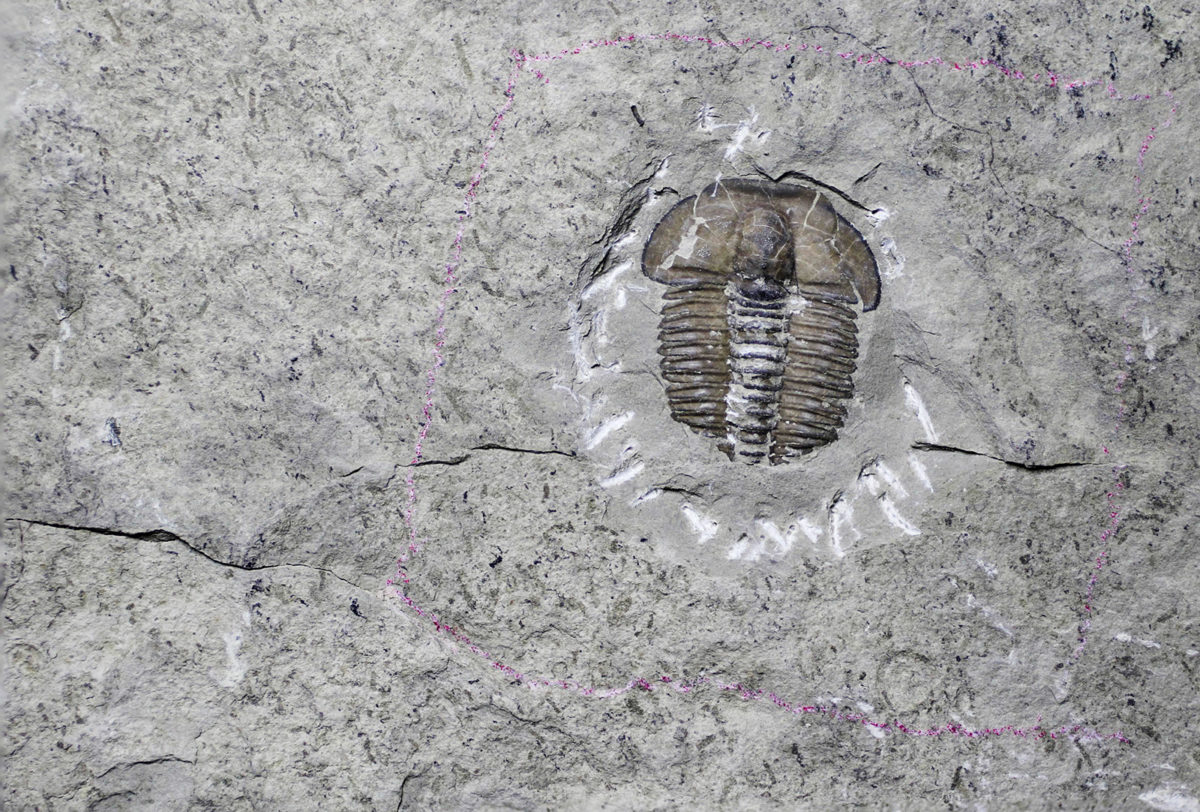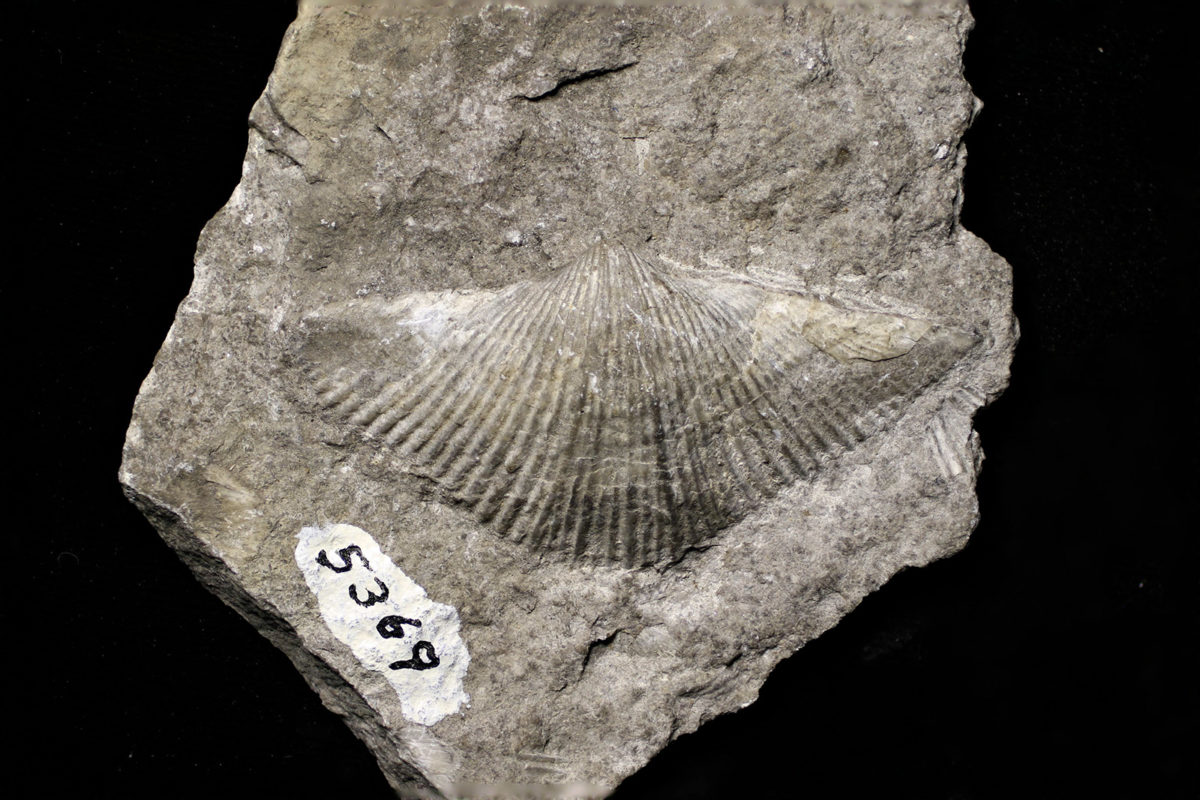Montana’s Fossil Librarian Delves into Prehistoric Life in the Bob Marshall
Upcoming Wilderness Speaker Series features Kallie Moore, collections manager of the University of Montana paleontology collection
By Micah Drew
Nestled deep in the recesses of the C.H. Clapp Building on the southern edge of the University of Montana campus is a hidden collection of some of the oldest species of plants and animals from eons past.
“Not a lot of people know this exists,” said Kallie Moore, the collection’s curator, or Fossil Librarian. “I’ve screamed from the rafters to let people know we’re here, but with college kids there is a constant turnover so people only remember what’s here for four or five years.”
The University of Montana Paleontology Center (UMPC) was established in 2005, with Moore coming on board as the collection’s manager in 2008. She adopted the title Fossil Librarian as the easiest way to explain what she does.
“I basically do the same thing as a book librarian, except for fossils that are millions and billions of years old,” Moore said. She facilitates loans of certain fossil species for researchers, manages displays and is working to slowly catalogue what exactly is in the collection.
The oldest fossils in the UM collection are deposits left by algae in Australia some 2.75 billion years old, while some of the youngest are around 9,000 years old from a cave near Helena. The three biggest collections in the library include a coral collection from the late Triassic period (220 million years ago), a 325-million-year-old collection of fish, sharks and oceanic invertebrates from near Lewistown, Montana, and a Cenozoic (30 million years ago) collection from Northwest Montana and northern Idaho that includes fossilized predecessors of horses, camels, and rhinos.
“Our collection is pretty wide ranging between location and time period — we’ve got around 50,000 specimens,” Moore said. “We have yet to finish a full inventory though because it takes about three years to inventory 5,000 specimens.”
On April 14, Moore will dive into a sliver of the UM collection to discuss the paleontological history of the Bob Marshall Wilderness as a featured guest of the Wilderness Speaker Series at Flathead Valley Community College. Hosted by the Bob Marshall Wilderness Foundation, the Northwest Montana Lookout Association and the Flathead-Kootenai Chapter of Wild Montana, the Wilderness Speaker Series also receives support from FVCC and its Natural Resources Conservation and Management program.

“The Bob is amazing, it has a lot going on in terms of the fossil record,” Moore said. “The geology there is really intense.”
In parts of the Bob Marshall, sections of earth’s crust, called plates, smashed into each other, buckling miles of earth and leaving behind folded rocks and sheer, upthrust cliffs like the infamous Chinese Wall.
“What happened is there are older rocks on top of younger rocks, which is backwards from how things normally are,” Moore said. “Those uplifted layers of older rock offer a great opportunity for observing the fossil record.”
In the 1930s and 1940s, a UM researcher named Charles Deiss conducted numerous field expeditions in the Bob Marshall Wilderness, mapping the geology of the area and collecting fossils. Most of what he collected, which is housed in the UM collection, were Cambrian-era trilobites, marine invertebrates that lived some 500 million years ago.
“I’ve read through lots of primary source material and lots of Deiss’ field notes and doing field work back in those days was rough work,” Moore said. “Sometimes they’d be out in the wilderness during their field season for 20, 30 or 40 days without contact with anyone, packing in all their supplies and then packing out all these rocks and fossils.”
Moore’s focus for the Wilderness Series talk will be on the geology and fossil record in the Bob Marshall. To aid in visualizing the data, Moore has been working with geography classes at UM to create shaded relief maps of each section of the Bob Marshall Wilderness Complex with fossil occurrences noted throughout. In addition to the Deiss trilobites, the Bob includes the slightly younger (400 million years ago) Devonian rock formations that yield fossilized shells, corals and sponges, and on the edge of the wilderness fossils can be found from the Cretaceous period (100-150 million years ago).
“During the Cretaceous period the Bob was a really swampy area so there’s quite a few plants you can find from back then,” Moore said. “There’s actually quite a bit of fossils in the Bob. It’s definitely the best represented wilderness area for fossils.”
The Wilderness Speaker Series is held in the Large Community Room (#139) at FVCC’s Art and Technology Building from 7-8:15 p.m. There is no charge for the community events and all are welcome to join the discussion. To learn more about the Wilderness Speaker Series, and watch recordings of previous speakers, visit bmwf.org/wss.
